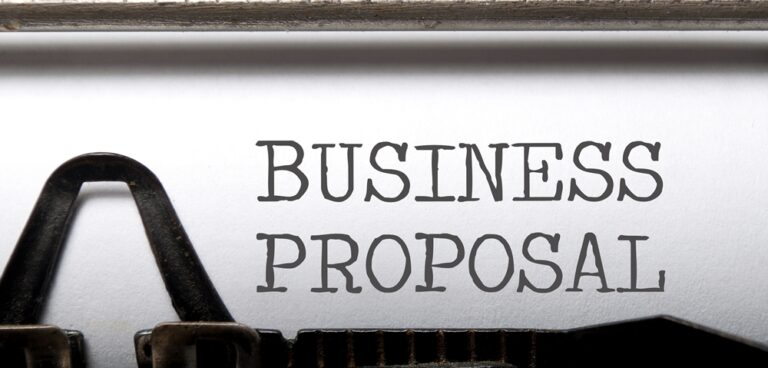When putting together a bid strategy or business proposal, it’s crucial to showcase value that extends beyond simply offering the lowest price.
Winning new business proposals is no easy feat. And writing them is unfortunately no easier. For new or small businesses, the process of bidding for contracts can be overwhelming, and leave you feeling unsure on what you truly bring to the table, especially in the face of stiff competition.
If you’re left wondering what you can really offer a potential customer, the obvious choice might be to undercut on price. After all, better ROI and a lower price tag should tip the scales in your favour, right? But relying on a low price point not only risks damaging your credibility, but it also overlooks one key opportunity; showcasing your strengths, and positioning your business as the better choice.
The key ingredient to successfully winning new business is to accentuate your value. The experts at BWS demonstrate how to go beyond cost and demonstrate why your business is the right choice.
Why price alone doesn’t define value
Whether drafting contracts or mapping out business proposals, focusing on lower prices can hinder success, even if the tender is evaluated on Quality vs. Cost. While of course it’s important to offer a competitive price, demonstrating tangible value, expertise, and aligning with your potential client’s needs, will produce far better results.
How to position your business as the ‘best choice’
- 1. Prove you meet (and exceed) the requirements
The very first step in positioning your business as the obvious choice, is to establish how you meet, and exceed their requirements. You’ll want to demonstrate that you meet every specification set out by the client, and how exactly you meet them. How do you meet the technical, commercial, and qualitative criteria set out – but more importantly, how can you go above and beyond and quantify how you will add extra value – as this will set you apart from the competition.
- 2. Define your core messaging
While you should always start a proposal by catering to the client’s specified criteria, your business’s core needs to speak loudly too. Why should they choose YOU? What makes you a better fit? But most importantly – what is the real value you can bring to the table? Once you have determined your core messaging, and found your overarching concept or promise your brand stands behind, it will be much easier to ensure you are conveying this throughout the entire proposal.
- 3. Demonstrate expertise and evidence of success
Words are words until they become facts when backed up with evidence of success. Which is why it’s important to showcase relevant experience, and know-how. You can do this by offering examples of completed projects that relate to your client’s ambitions and the positive outcomes. If you are in the early stages of your business, concentrate on showcasing relevant expertise such as team experience, credentials, past roles, and case studies – that way you can showcase credibility and capability without relying solely on a long track record.
- 4. Offer unique solutions
Focus on how your work will benefit the client, and offer unique solutions tailored to their pain points. Demonstrate how your approach addresses their specific circumstances, avoiding vague or generic claims. Ensure you reference their industry, location, size, or operating environment, and personalise your language and tone to mirror the terminology of the client. By aligning your specific solutions – tailored to their specific needs – you will demonstrate that your proposal is custom-fit to their criteria.
- 5. Present as the risk-free offer
At times, when starting out as a small business, it can be tricky to avoid being seen as a higher-risk offer. Longstanding companies have larger amounts of testimonials, case studies, and project stats – which can make it difficult to compete with. But don’t let this stop you. When bidding for new tenders as an SME, ensure you present yourself as a risk-free offer by including quality assurance measures, any accreditations or insurances for peace of mind, along with contingency plans to show buyers that you are prepared, and resilient in the face of any unexpected challenges.
- 6. Provide value other than cost
As mentioned above, it can be easy to fall into the cost trap when starting out. But besides the fact that offering lower than market average costs can be damaging, it can erode trust and credibility in the eyes of the client. In this stage, focus on value for money rather than low-cost services. And ask yourself; do you have strong innovation plans? Are your projects injected with social value measures? And are you able to work more efficiently than other competitors? Not only does value build trust, loyalty, clients also want assurance that their investment delivers real benefits, not just savings – the key to repeat business.
Michael Baron, Managing Director at BWS weighs in: “When reviewing business proposals, clients aren’t just buying a product or service; they’re buying partnership, trust, and the strongest indicators of a positive outcome. It’s essential to demonstrate that you understand the client’s world, and that you’re not just going to answer questions correctly, but instead anticipate their needs. Instead of solely offering value for money, consider offering a unique approach to reducing their risk, strategies that support their long-term business goals, and ways to deliver intrinsic value throughout their project lifecycle. That way, you instantly become more than a supplier – you become a strategic asset.”

